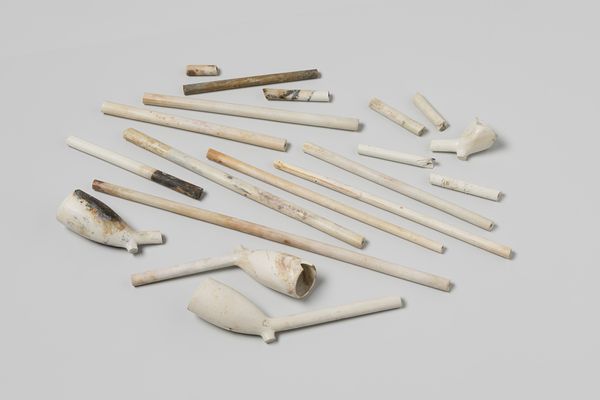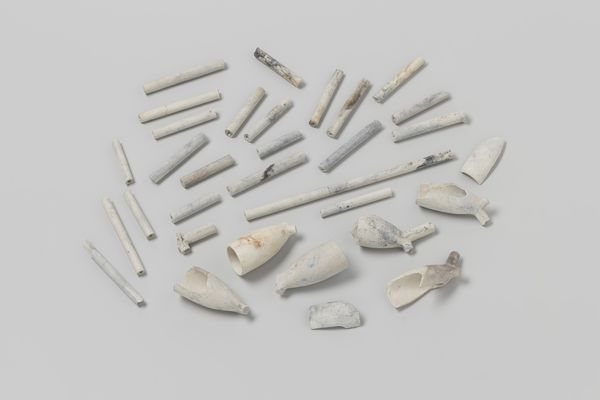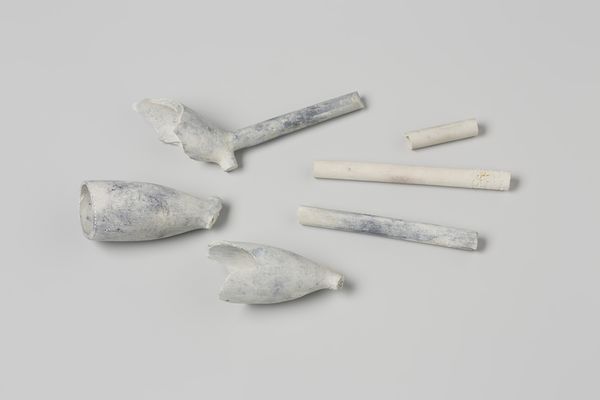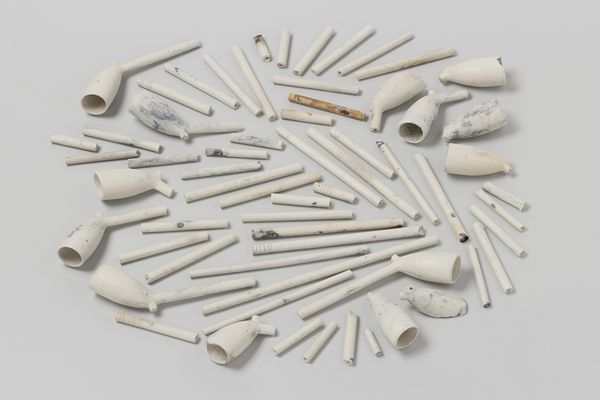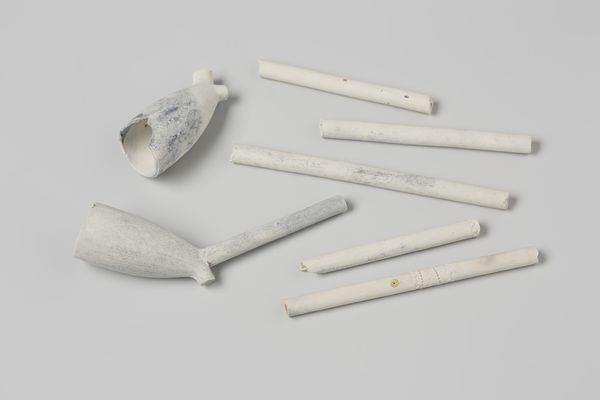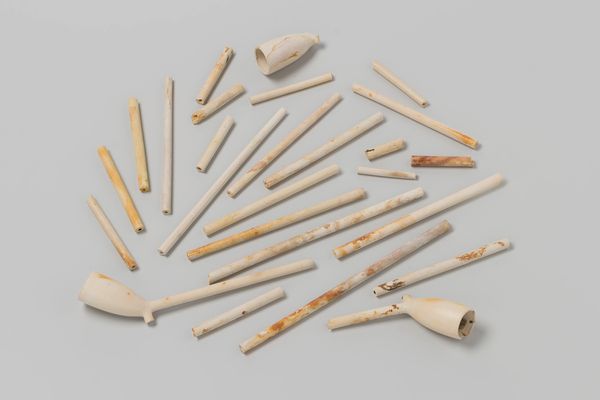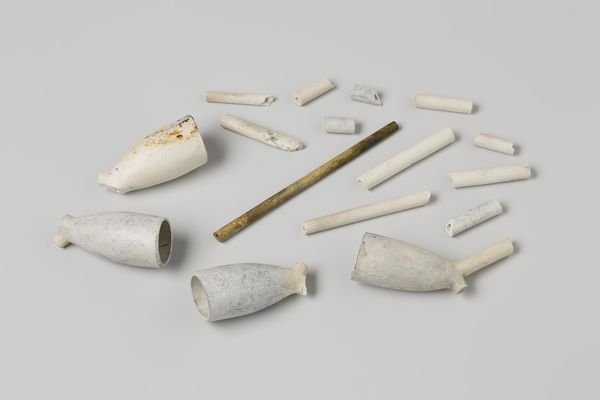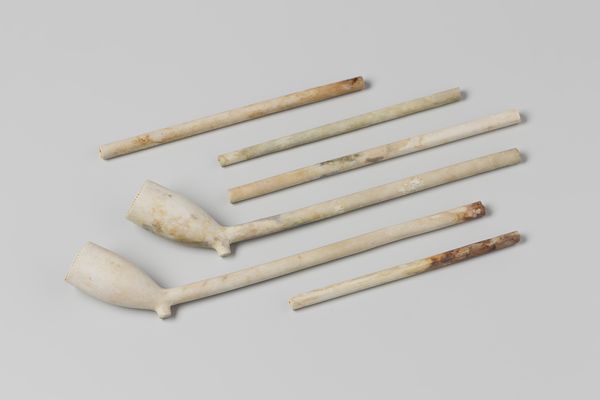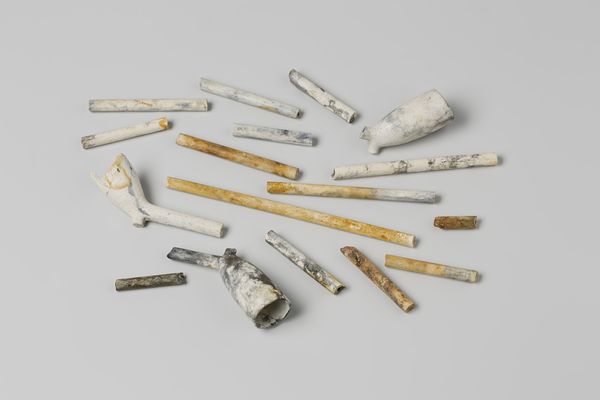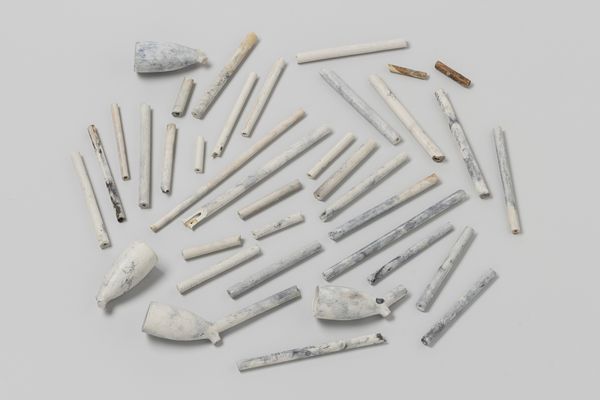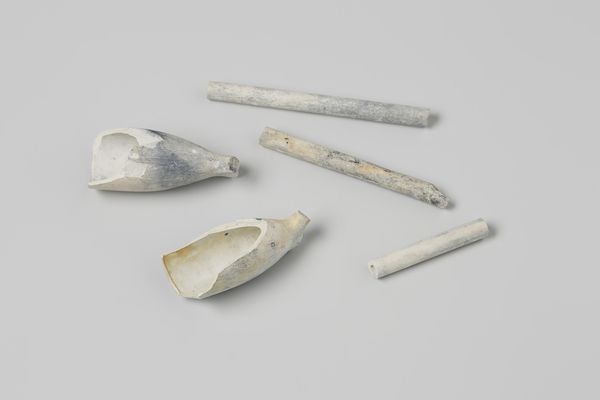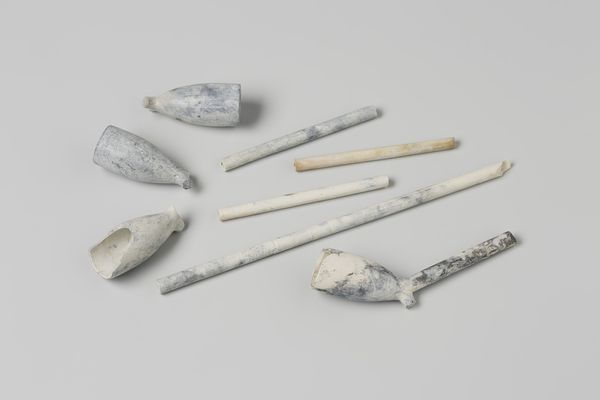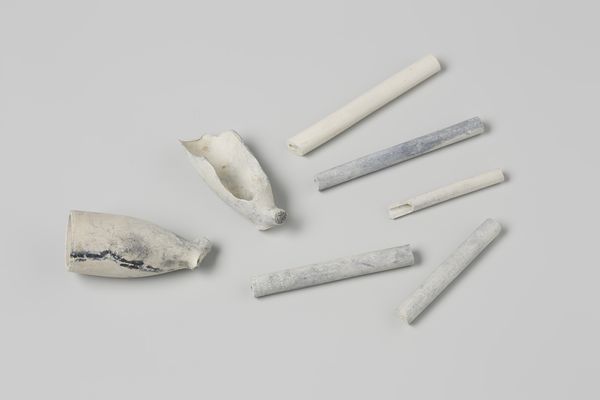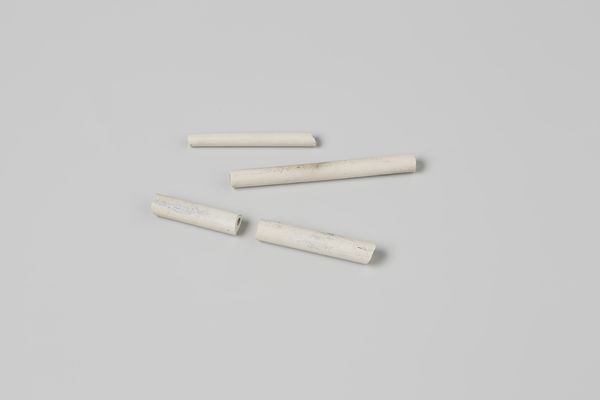
Fragmenten van pijpen en pijpenstelen uit het wrak van de Oost-Indiëvaarder 't Vliegend Hart Possibly 1700 - 1735
0:00
0:00
ceramic, earthenware
#
dutch-golden-age
#
ceramic
#
earthenware
Dimensions: length 6.8 cm, width 2 cm, depth 2.6 cm, length 4.5 cm, diameter 0.6 cm
Copyright: Rijks Museum: Open Domain
Curator: These fragments of pipes and stems, salvaged from the wreck of the Dutch East Indiaman 't Vliegend Hart, offer a material glimpse into the lives and commerce of the 18th century. Dating from roughly 1700 to 1735, these ceramic remnants narrate silent stories of maritime trade. Editor: Immediately, I'm struck by the subtle geometry at play. The stark white earthenware segments against the gray backdrop. There is something formally poignant about their fragmented state—how ruin becomes aesthetic, almost musical with their varying lengths and patinas. Curator: Precisely. Note the variation in colour—ranging from pristine white to mottled browns and blues—reflecting their submersion in seawater for centuries. Each stain is like a painted brushstroke of time. The degradation patterns contribute significantly to their visual texture, almost belying the original function. Editor: Symbolically, pipes themselves represent relaxation, social interaction, even contemplation. Tobacco's spread intertwined globally; these broken forms hint at connection and aspiration but also disruption and impermanence. Does 't Vliegend Hart—"The Flying Heart"—carry an emotional valence as its tale of passage is interrupted? Curator: Intriguing. In art, the broken object often becomes symbolic beyond its initial design—signifying the passing of eras or failed expectations. But it is in the simple interplay of tubular shapes and rounded pipe bowls laid before us, forming horizontal axes, where we derive our primary meaning here. Their inherent structures direct us. Editor: Perhaps. Yet the sheer ubiquity of clay pipes also points to something beyond aesthetic contemplation. It hints at deeply rooted colonial practices, consumerism, global economics, and a cultural phenomenon intrinsically entwined within complex ethical dynamics. One questions, through this visual display, who truly benefits. Curator: Your point about the entanglement with colonial structures offers vital counterpoint! Considering these simple fragments—devoid now of usability, and purely aesthetic—reminds how context radically transforms what we see when interpreting artifacts removed so distant from active circulation within global commerce. Editor: Exactly. It is powerful to see how broken mundane objects retain the symbolic weight from lost, globalized narratives.
Comments
No comments
Be the first to comment and join the conversation on the ultimate creative platform.
